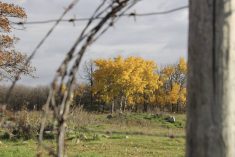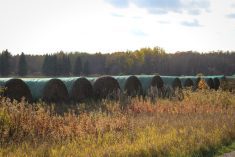MarketsFarm — In a stretch from the Atlantic to the Pacific Oceans, a wide swath of Canada was contending with dryness, according to the latest report from the Canadian Drought Monitor.
As of June 30, about 60 per cent of the country was abnormally dry to being in a moderate drought, with 76 per cent of Canadian farmland in that predicament.
Most of the Prairies had dry conditions of some sort, with a large part of southern Alberta in severe to extreme drought. As well, the drought monitor pinpointed a second pocket of severe drought in Manitoba west of Winnipeg; otherwise the province was abnormally dry to moderate drought.
Read Also

Manitoba Crop Report: Harvest advances despite heavy rains
Despite heavy rains in much of the province, Manitoba’s harvest advanced to 86 per cent complete as of Oct. 6, 2025.
“Overall, drought conditions continued to expand and increase in severity throughout the region,” the report noted of the Prairies. It said temperatures were 3 to 5 C above normal on the eastern half while the western half was 1 to 2 C above normal.
Some parts of Alberta saw drought conditions improve following a two-day rainstorm that brought flooding to areas west of Edmonton. Otherwise, the province continued to receive below-normal precipitation.
In Saskatchewan, the vast majority was reported to be abnormally dry with a large part of the province’s west rated as being in a moderate drought. There were also two pockets of normal conditions: one northeast of Saskatoon, the other south of Regina.
As with its Prairie neighbours, British Columbia was in abnormally dry to moderate drought conditions, with a sizeable pocket of severe to extreme drought in the province’s central area.
While northern Ontario was in abnormally dry to moderate drought conditions, the south was almost entirely normal. Only a narrow portion north of Windsor that extended along the east shore of Lake Huron rated abnormally dry.
The normal conditions reached eastward, almost to Quebec City where soil moisture levels were not as good. From the capital, Quebec was abnormally dry to moderate drought on either side of the St. Lawrence River, with some areas in severe drought.
In Atlantic Canada, much of New Brunswick was abnormally dry, as were parts of Nova Scotia, with Prince Edward Island in moderate drought. More than half of Newfoundland and Labrador was abnormally dry, with some areas in moderate drought.
One positive in the report was that no region of Canada was in an exceptional drought in June.
















